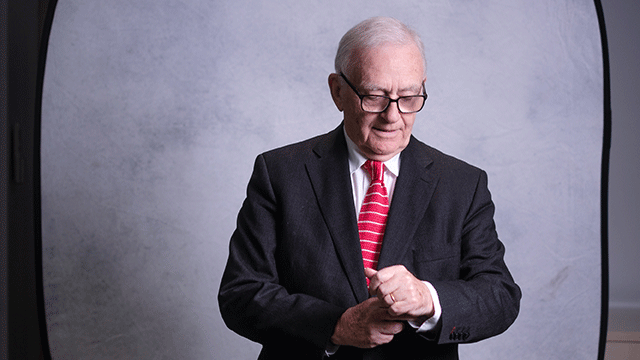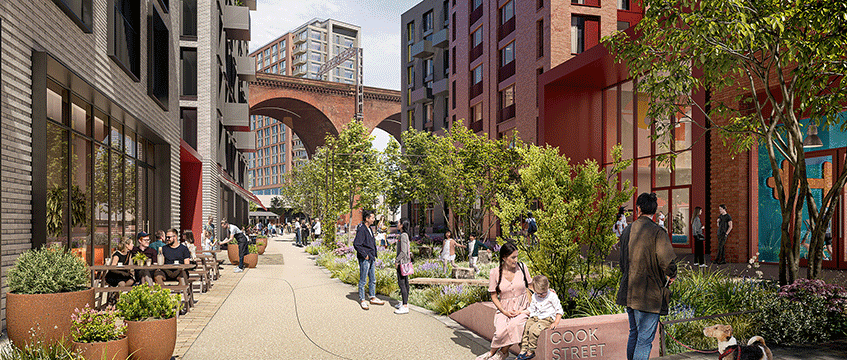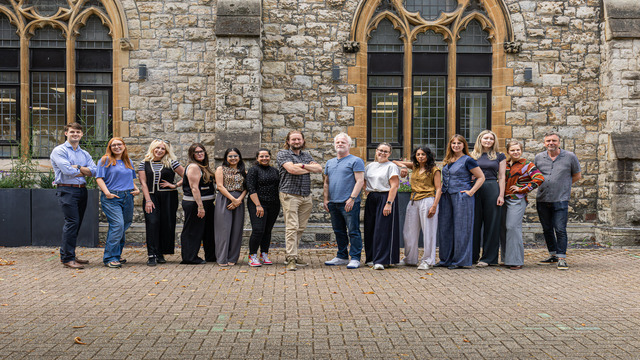Ashley Wheaton, vice-chancellor of the newly renamed University of the Built Environment, has called on the “fragmented” real estate industry to work better together to attract the next generation of talent, with the right skills, to meet the UK’s ambitious development and sustainability goals.
Wheaton spoke with Estates Gazette as the 106-year old institution, formerly known as the University College of Estate Management, formally changed its name – a key part of its ambition to cement its place as the “centre of excellence for built environment education”.
He believes there should be greater co-ordination across the sector to present a more compelling “story” for young people, showcasing real estate as the place to build a career and make a difference.
“The biggest challenge for this industry is attraction,” Wheaton said. “The Construction Leadership Council estimates we need 100,000 new entrants every year for five years. That’s half a million people we’ve got to attract, of which 50% are probably in technical and professional roles. So we need to compete with the other industries and provide a more coherent story that doesn’t leave us with those that haven’t already selected accountancy or law or medicine – other professions that are perhaps easier to identify with.”
Biggest culprit, the best opportunity
For Wheaton, the message is simple. “This is about making the world a better place. No question that 14, 15, 16, 17-year olds are tuned into the needs of making a more sustainable world. And, given that the built environment is largely the biggest culprit – 40% of carbon emissions come from it – it therefore has the biggest opportunity.
“I think the appeal is: you can come in and make a real difference to net zero. You can make a big difference to people’s wellbeing and other outcomes that really good places and buildings deliver on. That’s the message. But the challenge we’ve got is they’re hearing different messages from different parts of our industry.”
He added: “My view is that we need to coalesce around a much more integrated attraction approach which says to a 16 or an 18 or a 21-year old: you want to be in this industry, but you don’t have to choose yet, which part of it. Get to understand what makes it tick. Understand everything from planning, to design, to construction and then decide where to specialise.
“Unfortunately, the fragmentation, that we all know exists within real estate, is part of the challenge, because those individual elements are doing their own attraction activities. They are suggesting to a 16-year-old, ‘think about being an architect. Think about being a planner. Think about being a surveyor’. When really what they should be saying is, ‘just come on into our industry. We’ll find some base understanding, some knowledge, some competence and later we’ll think about what’s the right specialism’.”
Mutual understanding
Wheaton believes that, in order to deliver on that, there is a case for real estate qualifications to be integrated into the school curriculum, citing the success in Wales of the GCSE and A-level in built environment studies. “Employers – we work with some 700 as part of our degree apprenticeship provision – all broadly say the same thing, which is they wish school leavers and college leavers had a greater understanding of the built environment on day one.”
The integrated philosophy has shaped the continuing expansion of UBE’s portfolio of undergraduate, post-graduate and apprenticeship courses, which in recent years has included the acquisition of the London School of Architecture and the addition of planning.
“Over the past two or three years, and certainly into the future, we are broadening the portfolio to include professional disciplines across the whole built environment,” Wheaton added. “But it’s more about the fact those professions need to operate better together.
“If we are to create a built environment for the future, which is both safe, sustainable and delivers on the shared purpose that I think we all have, then having those transdisciplinary skills across all the professions is something that we need. [That way] an architect understands enough about planning, a planner understands enough about building pathology, about valuation, and so it goes on. And the end outcomes can be of the highest quality and the best that we can achieve together.”
Send feedback to Jess Harrold
Follow Estates Gazette











